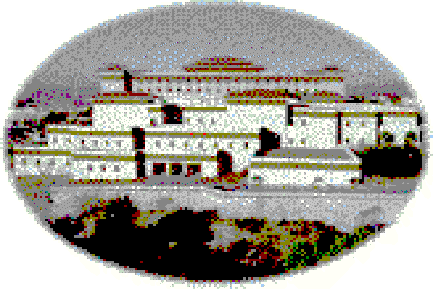|
What is the difference
between characters and integers?
 The
simple answer is NONE. As we alluded to in the previous tutorial,
ASCII characters are stored as numbers (for example, the number '2' is stored as
the number 50; the number '3' is stored as the number 51; the character 'e' is
stored as the number 101 (which is the sum of the 'characters' '2' and '3'). The
simple answer is NONE. As we alluded to in the previous tutorial,
ASCII characters are stored as numbers (for example, the number '2' is stored as
the number 50; the number '3' is stored as the number 51; the character 'e' is
stored as the number 101 (which is the sum of the 'characters' '2' and '3').
Don't forget:
ASCII is
merely a
scheme for representing characters or symbols, ONLY!!
--- And ---
COMPUTERS ONLY WORK WITH NUMBERS!
If we look at the ASCII Table, each of the
symbols represented are stored as numeric values:
NOTE:
For the
first quiz, you MUST memorize (there is no other way of
doing this) the corresponding decimal values for the ASCII characters:
-
NUL
(i.e., decimal 0)
-
BEL
(i.e., decimal 7)
-
Backspace (BS; i.e., decimal 8)
-
Carriage Return (CR; i.e., decimal 13)
-
Escape
(ESC; i.e., decimal 27)
-
Space
(SP; i.e., decimal 32)
-
The
digits: 0, 1, 2, 3, 4, 5, 6, 7, 8, 9 (i.e., '0' = decimal 48;
'1' = decimal 49; '2' = decimal 50 and so forth)
-
The
Upper case alphabet: A ,,, Z (i.e., 'A' = decimal 65; 'B' =
decimal 66; 'C' = decimal 67 and so forth)
-
The
Lower case alphabet: a ... z (i.e., 'a' = decimal 97; 'b' =
decimal 98; 'c' = decimal 99 and so forth)
Why
???
There
are two reasons:
-
It
reinforces the distinction between characters and numeric values, and
-
There
are times, when manipulating characters, when you must
deal with their numeric equivalents (for example, if you were to write a
program which checked the character that the user entered, and the user enters
a BS, how would you know?? There is no (single) symbol for a backspace)
Cheer
up! You need to memorize only 9 integers. Start now, and you'll be ready for the
test!
In the table, what is Dec, HX, Oct ??
We will get to HX
(Hexadecimal) and Oct (Octal) a little later. However, for the time
being, all that we need to know is that each of the ASCII characters represented
is stored as an integer (Dec, or Decimal) value. Each decimal (base 10)
value can, of course be associated with a binary value, which represents how the
'light switches' in the computer are set.
How
are numeric values stored??
We're getting to that.
Questions you should
be able to answer:
1. What is the difference between
characters and numeric values?
a. Characters are stored as symbols
b. Numeric Values are stored as symbols
c. Both are stored as numbers
d. A and B
e. None of the above
Answer: c

This page was last updated on
05/28/05.
|

 CIS3355:
Business Data Structures
CIS3355:
Business Data Structures